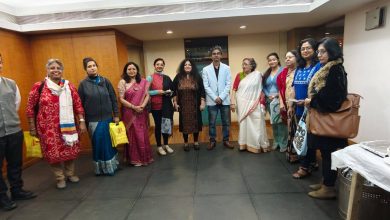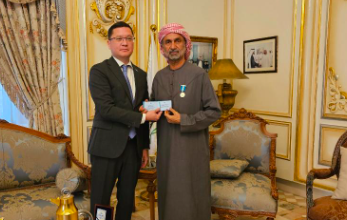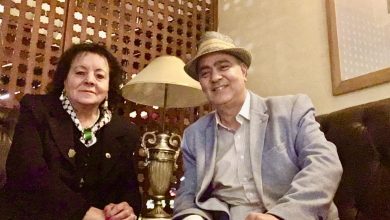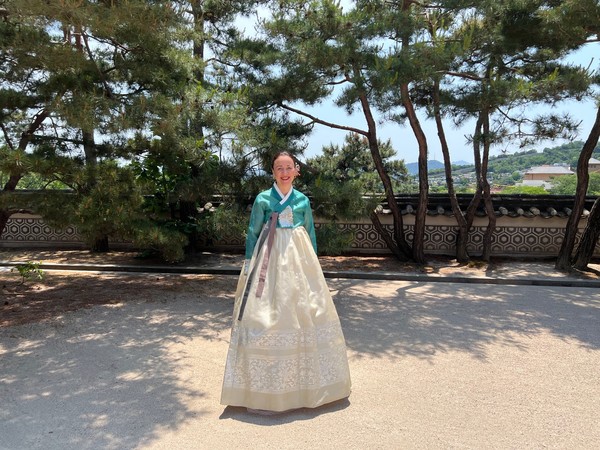
Interview with the Spouse of the Egyptian Ambassador to Korea
By Joy Cho, CEO of SeoulCity_Magazine
Egypt, often referred to as the cradle of civilization, is a land where ancient history and modern aspirations coexist in harmony. From the majestic pyramids of Giza and the timeless Nile River to the vibrant culture and artistic spirit of Cairo, Egypt continues to inspire the world with its beauty and depth. Over the past decades, Egypt and Korea have built a strong and friendly partnership grounded in mutual respect and cultural exchange. Both nations share a commitment to innovation, education, and the promotion of peace through culture and dialogue.
In this spirit of friendship, SeoulCity_Magazine met with the spouse of the Egyptian Ambassador to Korea for an insightful conversation. Before delving into questions and answers, we explored her impressions of life in Korea, her efforts to introduce Egyptian culture to the Korean people, and her hopes for the future of Egypt–Korea relations.
1. Question: As the spouse of an ambassador, what do you see as your most meaningful role in Korea?
Answer: I believe that true diplomacy happens not only at the official level, but also through everyday human connection; sharing traditions, cultures, values, and kindness, ie Public Diplomacy, and this is where the Ambassador’s spouse can contribute the most.
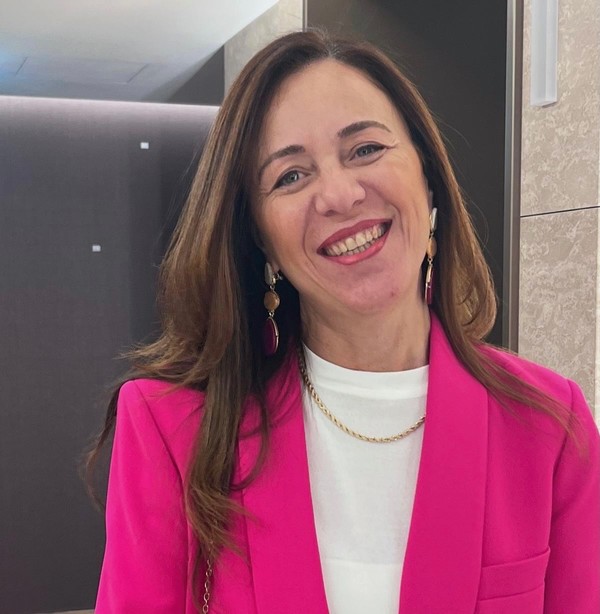
The ambassador’s spouse role is one of support, representation, and connection. She contributes to public diplomacy by having an active role within the diplomatic and social context of the mission, working closely with embassy staff to promote her home country in social, cultural, and charitable contexts. These types of activities often help to promote mutual understanding, cultural exchange, and goodwill. The role of an ambassador’s spouse, while unofficial, can be meaningful—especially in fostering understanding and friendship between nations on a more personal level.
It is a privilege and an honor to represent your home country in a hosting country. In my views, showing the warmth and hospitality of Egypt in Korea, a country known for its deep respect for rich history, tradition, and strong sense of community, has been a rewarding experience.
My involvement often includes participating in cultural events to showcase Egyptian heritage, supporting and participating in local charity or cultural community activities, supporting causes that strengthen bilateral relationships, and helping to highlight the richness and diversity of Egyptian heritage. It also includes organizing and hosting both formal and informal gatherings at the official residence, where special emphasis is placed on introducing traditional dishes, art, Egyptian music, and history of Egypt, the oldest history ever known to humankind.
Egyptian embassy hosts cultural events to showcase Egyptian heritage, supporting and participating in local charity or cultural community activities, supporting causes that strengthen bilateral relationships, and helping to highlight the richness and diversity of Egyptian heritage
The Egyptian mission in Korea is privileged with a nice building that incorporates both the chancery and the official residence. The building itself from an architectural standpoint is a reflection of the Egyptian history. In the chancery entrance we have like a small museum that has many replicas of ancient Egyptian artifacts, which helped providing more opportunity to introduce the most mysterious ancient Egyptian history. It also helped us to host many educational institutions and give them a more real feel of Egypt’s rich history.
We have previously hosted many educational institutions to our small museum. It was very noticeable that Egyptian history sparks great interest in Korea, also among international school students where many study Ancient Egyptian history in school. It felt very gratifying to see the looks of wonder in the eyes of the young children as they explored the small museum at the first floor of the chancery, and the curiosity they showed as they watched some videos about the mysterious ancient Egyptian history. It’s incredibly rewarding to see how our rich history and traditions are met with admiration and enthusiasm.
Also, the official residence has a fulfilling Egyptian flavor from Egyptian paintings, carpets, and home accessories that are very specific to the Egyptian culture. So when hosting any event, I try my best to make it feel like an actual visit to Egypt, so everything you see and touch as furniture and paintings and home accessories, and everything you taste, the music you listen to, and to complete the five senses, also the smell of Egyptian Bokour.
So, it’s through attending events, engaging in social activities, and diplomatic gatherings, that I actively promote the richness of our history and heritage—our crafts, music, and of course, our cuisine with the objective of representing the warmth, hospitality, and values of the Egyptian people, bridging cultural gaps and promoting understanding and appreciation of different cultures, or simply building personal relationships.
It brings me great joy to introduce aspects of Egypt’s rich history and culture to Korean people, while also learning from Korea’s unique and inspiring heritage. I hope that through these shared experiences, we continue to build a relationship based on mutual respect, trust, and sincere friendship.
2. Q: Have you been involved in any cultural exchange or charitable activities during your time here? If so, could you tell us about them?
A: Along the past almost four years of our stay in Korea, I have been part of the Ambassadors’ Spouses Association in Seoul (ASAS), helping in the charitable activities performed and participating in outreach events. I have also enjoyed mingling and getting more in touch with Korean ladies and Colleagues from the Diplomatic Corp within the Garden Club as a member.
In addition to ASAS and Garden Club, I used to take every opportunity to present Egyptian culture at other events including the Seoul International Woman Association bazaar (SIWA), The annual Seoul Friendship Festival (SFF), The annual Africa Festival, The Arab festival, the annual fundraising Red Cross Bazaar… . Among others.
These activities help strengthen the bond on the social level more than anything because it is available to the public. We have always participated with both a cultural and Food booth whenever possible. The cultural booth would provide a good flavor of the history and heritage, sometimes also having Egyptian costumes available for the Korean people to try on and have a memorable photo of themselves dressed as an Egyptian Pharaoh, or having their names written in hieroglyphics. While the food booth is a real taste of Egyptian cuisine prepared and offered with love and care. Usually, Egyptian modern music is played at the food booth, and it was overwhelming to see how Korean people enjoyed listening and interacting with the Egyptian music and songs.
During those festivals, whenever a performing stand and celebration is available, we were able to get performers from Egypt, to also promote Egyptian folkloric dance or modern songs. As a result, the final outcome is that the culture has been featured not only at the Residence itself but also at various events and venues.
Just as art serves as a form of ‘soft power’ in politics, I see cultural diplomacy as the ‘soft power’ within diplomacy itself. It paves the way for meaningful exchanges that formal settings can’t always achieve. It allows countries to project their values and norms in a way that resonates with others. Creative expressions like songs, music, cinema, and folkloric dance transcend borders—they speak to everyone, regardless of language or background, making them powerful tools for building mutual understanding and connection.
In essence, cultural diplomacy nurtures goodwill and mutual respect, strengthening ties between nations through simple yet powerful experiences—be it a dance, a dish, or a heartfelt dialogue.
3. Q: How has your experience been living in Korea? What aspects of Korean culture have you found most interesting or enjoyable?
A: Living in Korea, for almost four years now, has been an enriching, intense, and eye-opening experience.
In preparation of our postings to South Korea, we were keen to know more about Korean culture, so watched Korean dramas, read more about Korean history, traditions, culture, and Korean people. It definitely helped, but yet knowing Korean people in person really made the whole difference. As a Korean proverb states “Knowing the road and walking the road are clearly different.”
When we first arrived, everything was new, and the language difference seemed like a real barrier. However, after a while I started to know how to take advantage of the technology advancement that Korea has to offer; I am now a strong advocate for Naver and Coupang. I appreciate the infrastructure, the roads, the artistic architecture of many buildings, which co-exist with the palaces and temples and hanbok villages, offering a unique blend of ancient and modernity. Similarly, the integration of green spaces in urban areas is also notable.
Other than Seoul, I have been to Suwon, Mokpo, Nami Island, Sokcho, Busan, and Jeju island. I have truly enjoyed the cultural richness, amazing nature that changes in color with each season, and history of Korea.
One of the unexpected delights was discovering that every city in Korea has its own official mascot — often a bright, cheerful character representing something completely unique to that area. I do actually have an emotional attachment to Hechi (Seoul’s Official mascot) and his friends.
Korean cuisine is also deeply social. Meals are often shared, with dishes placed in the center of the table and everyone reaching in—something that reflects the communal spirit I’ve felt throughout my time here.
Also amazing is the remarkable sense of safety and public trust. It’s common to see Coupang delivery packages left unattended on the sidewalk, untouched for hours. Even more surprising: in crowded cafes, people regularly leave their phones, wallets, or even laptops on tables to save their seats, a quiet sign of mutual respect and social trust that’s truly impressive.
4. Q: What message would you like to share with the Korean people about your home country?
A: Egypt is the first and oldest civilization in human history, with a historical heritage that dates back over 5,000 years. It is the first state to be founded in human history. It is the only country in the world to have an entire scientific field—Egyptology—dedicated solely to the study of its ancient heritage.
Ancient Egypt left a lasting mark on human history as it laid the foundations for many aspects of modern civilization. Today, we still use many of ancient Egyptian inventions; apart from the 12-months calendar we now use and the clock, the following are other inventions… . To list a few:
Egypt has been given many names: the cradle of civilization, motherland of the world, gift of the Nile river, El mahroussa (means protected) which is the nickname the Arab world uses, referring to her protective boundaries as well as lands protected by God, and ‘Masr’ in Arabic, which simply means ‘Country’.
Geographically, Egypt is a transcontinental country reaching over the northeast corner of Africa, and the Sinai Peninsula in the southwest corner of Asia.
It is bordered by the Mediterranean Sea to the north, the Red Sea to the East (with a total of 2900 km coastline), and the Suez Canal – man made artificial sea-level waterway, connecting both seas, dividing Africa and Asia, and serving as a key trade route between Europe and Asia. Egypt is also linking northeast Africa with the Middle East.
Ancient Egypt is literally built along the Nile; it’s the lifeline of the country since the ancient history. The 4000-mile-long river connects almost all the cities of Egypt. Historical places in Egypt mostly lie along the Nile River. And this is why the Nile cruise from Luxor to Aswan is a cruising along history.
Cairo is the capital and largest city of Egypt, while Alexandria is the second. Egypt is the most populous country in the Middle East (115M), 3rd in Africa, and 14th worldwide.

출처 : 서울시티(https://www.seoulcity.co.kr)
As part of the 2030 vision, and to expand from the capital and relieve population pressure, Egypt is constructing dozens of new cities around the country. Right now, 20 cities are being constructed. The most significant ones are: New administrative Capital in Cairo, and New Alamein in the North coast. These projects aim to modernize areas, promote high-tech development, create new residential and commercial hubs, and attract tourism
Therefore, my home country offers an incredible blend of seaside and historical tourism: A rich marine life and vibrant coral reefs at the Red Sea’s warm water making it a snorkeling and diving heaven all year-round, Yellow sands and amazing dunes of Sinai on the east side, and Siwa on the west side, attracting adventure lovers with desert excursions. With the serene crystal-clear water of the Mediterranean coast, the historic banks of the Nile River, the bustling streets of old Cairo, and the year-round sunshine, Egypt caters to every traveler’s interest and promises unforgettable experiences for every type of traveler, we promise: Egypt stays with you.
The Egyptian people are known for their warmth, hospitality, and unmatched sense of humor, traits that have endured through thousands of years of history. Family is the heart of Egyptian life, and hospitality to guests are deeply ingrained values. Gatherings often involve enough food to feed a small village (just in case anyone’s still hungry after the tenth plate)
Egypt’s cultural heritage is reflected in its cinema, music, art, cuisine, and festivals, all of which carry echoes of Pharaonic, Coptic, Islamic, and Mediterranean influences. Despite the challenges of modern life, Egyptians maintain a strong connection to their history, with pride in their identity and a deep respect for their country’s ancient past. Pride and status are found in being helpful, generous and charitable to others.
In Egypt, the main meal is lunch, not dinner. Egyptians typically have lunch after work, and often follow by an afternoon rest. Dinner comes as a lighter snack later at night.
Meals may be eaten together or separately, but on weekends or holidays, most families gather for a meal, often including the extended family.
The Egyptian diet is typically rich in beans, bread, rice, vegetables, and fruits. Falafel (Taamiya), and Kushary can be purchased from street vendors all over Egypt. Egyptian cuisine also shares similarities with food of the Eastern Mediterranean region, such as rice-stuffed vegetables, Vine leaves, shawerma, Kebab, and kofta, with some variation and differences in preparation.
If I choose one national dish to elaborate on, I would choose Kushari. Kushari originated in the 19th century, and is to Egyptian cuisine as the pyramids are to its culture: Characteristic, Iconic, and Beloved. Kushari mixes rice, macaroni, and lentils into a single dish, topped with tomato sauce with special Egyptian spice blend, and garnished with hummus and crispy fried onions. As traditionally-prepared kushari does not contain any animal products, so it can be considered vegan.
It is currently served in every Egyptian home, in restaurants all over Egypt, where some restaurants specialize in Kushari to the exclusion of other dishes, and is also served on every Egyptian street corner, where street vendors serve the dish from carts to people eagerly waiting in line to eat this beloved highly popular dish.
The idea sounds strange… until you taste it. Then you’ll know why this dish is a favorite among Egyptians.
5. Q: Could you share with us any UNESCO World Heritage sites, national artistic achievements, or notable heroes from your country?
A: Egypt is a land of Timeless Wonders, among its greatest testaments to human achievements are its UNESCO World Heritage Sites, which preserve the cultural heritage of millennia and are of universal value to humanity.
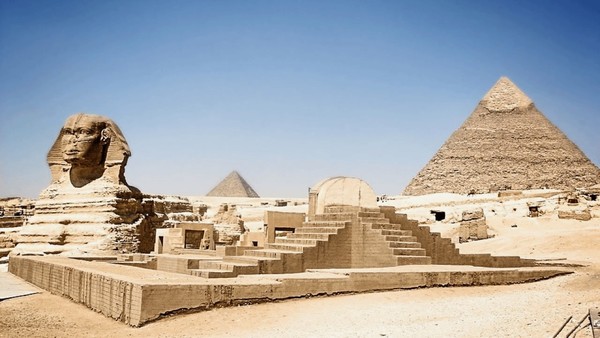
Egyptian UNESCO World Heritage site
Ancient Thebes
Thebes is located in modern-day Luxor and was the glorious capital of Egypt during the Middle and New Kingdom periods. It is home to some of the most magnificent monuments of ancient Egypt and offer insight into Egyptian religious beliefs, funerary practices, and royal authority:
• Karnak and Luxor Temples
• Valley of the Kings and Valley of the Queens: Burial places of pharaohs, including the famous tomb of Tutankhamun.
• Mortuary temples such as Hatshepsut’s temple.
• Abu Simbel: This mind-blowing archaeological site was actually saved by UNESCO in an international effort to relocate the immense Ancient Egyptian monuments away from the flooding of the Nile river from 1960 to 1980. The site is often described as a “modern wonder” due to the engineering effort it took to move the temples block by block.
Egyptian UNESCO World Heritage site
Historic Cairo
Historic Cairo is a vibrant blend of cultures and eras. This area reflects Egypt’s long-standing role as a hub of religion, education, and art in the Islamic world.
Founded in the 10th century, it boasts:
• Mosques, madrasas, and hammams dating back to the Fatimid, Mamluk, and Ottoman periods.
• The Al-Azhar Mosque and University, a center of Islamic scholarship for over a thousand years.
• Narrow alleyways, bustling souks, and the famous Khan el-Khalili bazaar.
• Moez street, the most famous street in old Cairo and is called by the UN “the greatest concentration of medieval architectural treasures in the Islamic world”
Egyptian UNESCO World Heritage site
In Coptic Cairo, Christianity’s early stronghold in the country, you’ll find centuries-old cathedrals and churches, including the ‘Hanging Church’; the oldest standing Coptic church in the world. The church gets its name from its location on top of a cliff overlooking the Nile River, which makes it appear to be hanging over the river.
Memphis and its Necropolis – the Pyramid plateau from Giza to Dahshur including:
• The Great Pyramids of Giza, the only surviving member of the Seven Wonders of the Ancient World
• The Sphinx, a symbol of mystery and power. Though not on the original Seven Wonders list, the Great Sphinx, carved from a single piece of limestone, with its lion body and human head, is a symbol of Egyptian endurance, and remains one of the largest and oldest sculptures in the world
• Older pyramids at Saqqara and Dahshur, including the Step Pyramid of Djoser, the first pyramid ever built.
These sites highlight the ancient Egyptians’ mastery of engineering, architecture, and astronomy.
Abu Mena
Once a major Christian pilgrimage site, Abu Mena is a ruined complex in the Western Desert. It contains:
• A church, monastery, basilicas, and other structures built over the tomb of Saint Menas, a 4th-century martyr.
• Its layout influenced church architecture across the Byzantine world.
Egyptian UNESCO World Heritage site.
Not much remains standing in the ancient Christian city today besides the foundation of some of its great buildings, such as the basilica.
Saint Catherine Area
Located in the Sinai Peninsula, this sacred site includes:
• Saint Catherine’s Monastery, one of the oldest working Christian monasteries in the world.
• Mount Sinai, traditionally believed to be the site where Moses received the Ten Commandments.
• This area is not only important to Christianity but also revered in Islam and Judaism, making it a place of interfaith significance.
At the foot of Mount Sinai is the Orthodox Saint Catherine Monastery, which was founded in the 6th century and is the oldest Christian monastery in the world still used for its original function.
Wadi Al-Hitan (Whale Valley)
Egyptian UNESCO World Heritage site
Unlike Egypt’s other sites focused on human history, Wadi Al-Hitan tells a story of natural evolution . This fossil site in the Western Desert contains remains of ancient whales that provide crucial evidence of the transition from land-dwelling to marine life.
• A unique desert landscape, offering insight into Earth’s distant past.
• According to UNESCO: “These fossils represent one of the major stories of evolution: the emergence of the whale as an ocean-going mammal from a previous life as a land-based animal. This is the most important site in the world for the demonstration of this stage of evolution.”
Egyptian UNESCO World Heritage artifacts.
Egypt’s Cultural Legacy: A Source of National Pride
These World Heritage Sites reflect Egypt’s rich contributions to global heritage. They are more than tourist attractions—they are living symbols of identity, resilience, and creativity. Egypt continues to invest in their preservation and restoration, often with international cooperation. And in our honest efforts to preserve Egypt Glorious past, the country is nowadays holding a major event to mark the opening of the new Crown Jewel of Egypt: The Grand Egyptian Museum (GEM).
With 490,000 Sqm, and 120,000 ancient Egyptian artifacts, including the complete Tutankhamun collection, the GEM is the Largest archaeological museum in the world due to open officially on the 1st of November 2025.
The country is a living museum filled with wonders, and as the world changes, these timeless treasures remain vital links to our shared human past, and Egypt stands proudly as their guardian.
“Egypt gave birth to what later would become known as Western Civilization, long before the glory of Greece and Rome.”
— John Henrik Clarke
Egyptian UNESCO World Heritage site
Egyptian UNESCO World Heritage site
Temples
출처 : 서울시티(https://www.seoulcity.co.kr)

